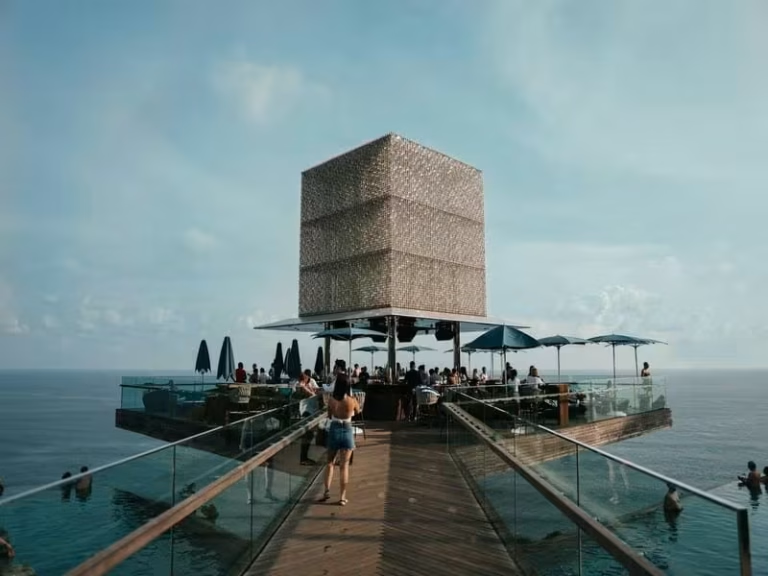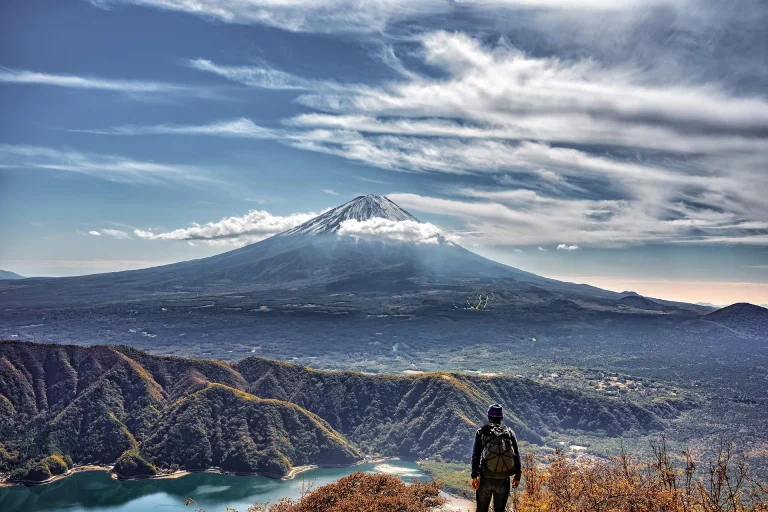Ultimate Seoul (ICN) Layover Guide: Insider Tips & Itineraries
That familiar airport hum, the rhythmic announcements echoing through the terminal – it’s a sound I’ve grown accustomed to over seven years of traversing the globe. But a layover isn’t just dead time to me; it’s a fleeting opportunity, a chance to taste the essence of a new place, even if just for a few hours.
Recently, that opportunity presented itself during a Seoul layover in the vibrant city of South Korea. Instead of resigning myself to airport purgatory, I decided to embrace the stopover and squeeze every last drop of experience from it. I vividly recall one layover where the aroma of something sweet and spicy pulled me away from my gate, leading me to discover my first taste of tteokbokki – a fortunate start to a mini-adventure.
The moment you step off the plane in Seoul, the clock starts ticking – but with proper planning, even the shortest layover can become a meaningful cultural immersion. I’ve learned through multiple visits that approaching a Seoul layover strategically opens up possibilities most travelers miss. And trust me, leaving the comfort of the airport lounge for the vibrant streets of this dynamic city is a decision you won’t regret.
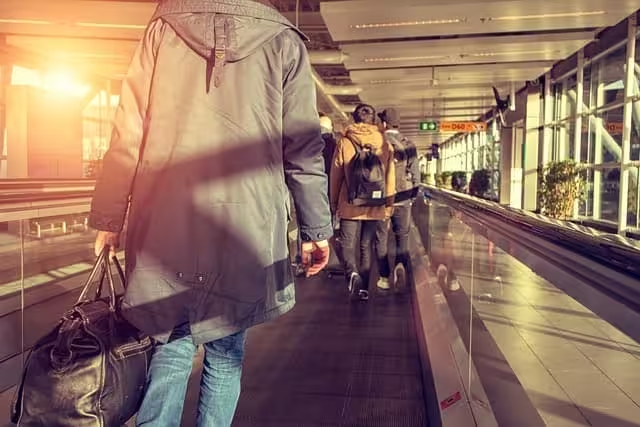
What to Know Before Your Seoul Layover
- CURRENCY: South Korean Won (₩)
- LANGUAGE: Korean (with English widely spoken in tourist areas)
- SAFETY: Excellent (Rated ‘A’)
- COST: $$$ (Mid-range)
- BEST TIME TO GO: Spring (March–May) and Fall (September–November)
- VISA/K-ETA: Check visa requirements for your nationality and potential need for a K-ETA before travel. Verify requirements on official sites: www.visa.go.kr and www.k-eta.go.kr.
- MINIMUM LAYOVER TO LEAVE AIRPORT: Generally 7+ hours recommended for a very brief city visit.
- FASTEST AIRPORT TRANSFER: AREX Express Train to Seoul Station (approx. 43-51 mins)
- EMERGENCY NUMBERS: 112 for general emergencies, 1330 for tourist information.
- PREFIX: +82
- CRITICAL NAVIGATION TIP: Download Naver Map or Kakao Map Before Arrival.
Navigating Incheon International Airport (ICN) Like a Pro
Incheon International Airport (ICN) consistently ranks among the world’s best, and for good reason. It’s efficient, clean, and surprisingly entertaining. Before venturing out, take a moment to familiarize yourself with the layout, differentiating between Terminal 1 (T1), Terminal 2 (T2), and the Concourse (satellite terminal connected to T1). Clear signage in multiple languages makes navigation easy. A free shuttle train connects T1/Concourse and T2 for transfers.
What can you do in Seoul airport during a layover?
Plenty! ICN is a destination in itself. Consider utilizing the airport’s excellent amenities:
- Free Wi-Fi: Readily available throughout the airport.
- Shops and Duty-Free: You’ll find everything from high-end brands (Shinsegae, Shilla, Hyundai) to unique Korean products like K-beauty cosmetics, ginseng products, and traditional snacks.
- Savor Korean Cuisine: Numerous restaurants and food courts (like CJ Food World in T1 ) offer authentic dishes like bibimbap, bulgogi, and kimchi jjigae. Some feature open kitchens.
- Korean Traditional Culture Experience Center: Located in transit areas (e.g., T1 4F near Gate 11 ), these centers offer hands-on activities like crafts (bracelet making, scroll writing ), Hanbok (traditional dress) try-on, and cultural performances, providing a glimpse into Korea’s rich heritage. There’s even a mini-replica traditional village.
- Relax in a Comfortable Lounge: If you have lounge access through your airline or a membership program (like Priority Pass), take advantage of comfortable seating, complimentary food and drinks, and often, shower facilities.
- Enjoy a Spa Treatment:
- Spa On Air: Located landside (before security) in T1 Basement 1F East and T2 Basement 1F West. Offers 24/7 access to showers, hot tubs/baths, saunas (jjimjilbang), and rest areas. Massages may also be available. Prices are very reasonable: ~₩10,000 for shower/bath (2 hrs), ~₩20,000-₩25,000 for 6-hour day use, ~₩25,000-₩35,000 for 12-hour/overnight use. It operates on a first-come, first-served basis (no reservations). A great budget alternative to a hotel for refreshing.
- Prana Spa / Skin Care: Located airside (after security) in T2 (near Gates 231 & 268) and T1 (near Gate 25) offering classic massages from ~₩10,000.
- Gardens and Relaxation Zones: ICN has beautiful indoor gardens and free, comfortable Relax Zones / Nap Zones with loungers available 24/7. Look for signage.
- Cultural Street and Museums: Explore the Korean Cultural Street , or visit one of the airport’s museums (like the Incheon Airport Museum ) for a dose of art and history.
- Gaming Zone and Movie Theater: For entertainment, the airport even has a gaming facility and a CGV movie theater. An ice skating rink might also be available.
- Observation Deck: The PR Observation Deck in T2 offers panoramic airfield views.
Transit Hotels & Capsule Stays
For layovers that stretch overnight or beyond 8 hours, consider these on-site or nearby accommodations:
- Transit Hotel (Airside): Located airside (after security) on the 4th floor of T1 and T2. Offers private rooms with ensuite baths and 24/7 reception. Ideal for short rests between international flights without clearing immigration. Rates vary, check airport website.
- Capsule Hotel (Darakhyu): Located landside (before security) near the Transportation Centers of T1 and T2. Provides secure sleeping pods with shared or private showers. Bookable by the hour. Check airport website for rates and booking.
- Spa on Air (Jjimjilbang – Landside): As mentioned above, located landside in T1 B1 East and T2 B1 West. Offers gender-segregated saunas, baths, and communal sleeping floors with mats. A very budget-friendly overnight option (~₩25,000-₩35,000 for 12 hours). First-come, first-served.
- Nearby Hotels (Landside): Hotels like Paradise City , Grand Hyatt Incheon , and others near the airport offer more traditional rooms, often with free shuttles. Paradise City also features a high-end spa (Cimer) and casino.
Booking Tip: Reserve transit hotels or capsule hotels via the ICN website or booking platforms if possible, especially during peak times. Spa on Air is walk-in only.
Secure Your Bags: Luggage Storage & Lockers
Travel lighter – ICN provides 24-hour manned counters and self-service lockers in both terminals.
- Manned Counters: Accept oversized items.
- Self-Service Lockers: Faster and key-based, but limited to standard bag sizes.
Approximate rates for luggage storage:
- Small (≤15 kg): ₩4,000 for 1–3 hrs, ₩6,000 for 3–6 hrs, ₩9,000 for 6–24 hrs
- Medium (≤25 kg): ₩5,000 for 1–3 hrs, ₩7,000 for 3–6 hrs, ₩11,000 for 6–24 hrs
- Large (>25 kg): ₩6,000 for 1–3 hrs, ₩8,000 for 3–6 hrs, ₩13,000 for 6–24 hrs
Note: Rates and details are approximate and subject to change. Check upon arrival or pre-book if possible (some services allow online booking ). Using luggage storage can save time by skipping baggage claim if you have checked bags you don’t need during the layover.
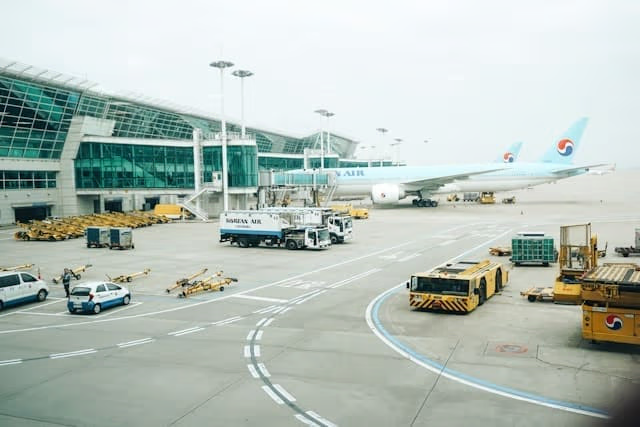
Layover Options Based on Your Time in Seoul
It’s crucial to re-verify visa/K-ETA requirements for your nationality and plan your transportation in advance to make the most of your layover. The feasibility and type of your Seoul adventure heavily depend on the duration of your stopover.
Minimum Connection Time:
- International to International (Staying Airside): As little as 45 minutes if bags are checked through and you have your boarding pass. However, allow more time for comfort. If changing airlines or needing to recheck luggage (separate tickets), allow 3-4 hours.
- International to Domestic: Allow 90 minutes to 3 hours.
- To Leave the Airport: A minimum of 7+ hours is generally recommended to comfortably leave the airport, explore briefly, and return without stress. Remember this includes ~1.5-2 hrs travel time and ~2-3 hrs airport buffer, leaving only ~1-3 hours for actual sightseeing. Many city shops/attractions don’t open until 10 or 11 AM.
Here’s a more granular breakdown of what’s possible:
3-5 Hour Layover: Airport Delights
With a shorter layover, venturing far outside the airport might be too risky. However, Incheon Airport itself offers plenty to keep you occupied. This is a good option for families with young children who might prefer to stay within the airport’s comfortable confines.
- Explore the Shops and Duty-Free: Indulge in some retail therapy.
- Savor Korean Cuisine: Numerous restaurants within the airport offer authentic Korean dishes.
- Visit the Korean Traditional Culture Experience Center: Engage in hands-on activities or watch performances.
- Relax in a Comfortable Lounge: Utilize lounge access if available.
- Enjoy a Spa Treatment: Consider a quick massage at Prana Spa (airside) or, if time allows and you’re willing to clear immigration, a shower/bath at Spa On Air (landside, ~₩10,000 for 2 hrs).
5-7 Hour Layover: A Quick Taste of Seoul
A 5-7 hour layover provides a very tight window to experience a small slice of Seoul. This is generally not recommended by experienced travelers due to the high risk of missing your connection. You must factor in travel time (~1.5-2 hrs round trip via AREX Express), immigration/customs (~30-45 mins), and return airport procedures (~2+ hrs). This leaves potentially less than 1-2 hours for actual exploration, and many places won’t be open if you arrive early.
If you are determined and understand the risks:
- Free Transit Tour (Recommended if feasible): Incheon Airport offers free transit tours specifically designed for layovers.
- Eligibility: Layover < 24 hours ; must meet Korea entry requirements (check visa/K-ETA status).
- Duration: Tours range from 1 hour (in-airport K-Culture Zone ) to 3-5 hours (Incheon or Seoul sights).
- Cost: Tours are generally free, but some may require small entrance fees (e.g., ~$3-4 USD for palaces). Golf tours have significant fees.
- Booking: Pre-book online via the official ICN Transit Tour website (recommended as spots are limited) or register on-site (first-come, first-served) at desks on 1F of T1 (near Gates 1/2) and T2 (near Gate 5). Arrive 30 mins before tour start.
- Quick Trip to Gyeongbokgung Palace (경복궁) (Very Rushed): Take the AREX Express to Seoul Station (~43/51 mins) , then a short subway ride (Line 3 to Gyeongbokgung Stn, ~15 mins). Gyeongbokgung is Seoul’s largest palace. Entrance: ₩3,000. Closed Tuesdays. Hours: 9 AM – 5/6/6:30 PM depending on season. Allow absolute minimum 2.5-3 hours just for round-trip travel and airport buffer, leaving maybe 30-60 mins at the palace itself. Highly stressful.
- Explore Insadong (인사동) for a Cultural Immersion: This charming neighborhood is known for its traditional crafts, tea houses, and art galleries. It’s a great place to pick up unique souvenirs. You can find delicious traditional meals here as well. Insadong is relatively close to Gyeongbokgung Palace, making it a possible (but rushed) combination.
- Explore Near the Airport (Less Risky): Take the AREX All-Stop train one stop to Unseo Station in Incheon’s Jung District. This area offers a taste of local Korean life with restaurants, cafes, and a Lotte Mart, involving much less travel time and risk than going to Seoul.
7-9 Hour Layover: Deeper Exploration
With 7-9 hours, you have a more realistic window to explore a specific area of Seoul, though time management is still key. Aim to be heading back to ICN at least 3-4 hours before your flight.
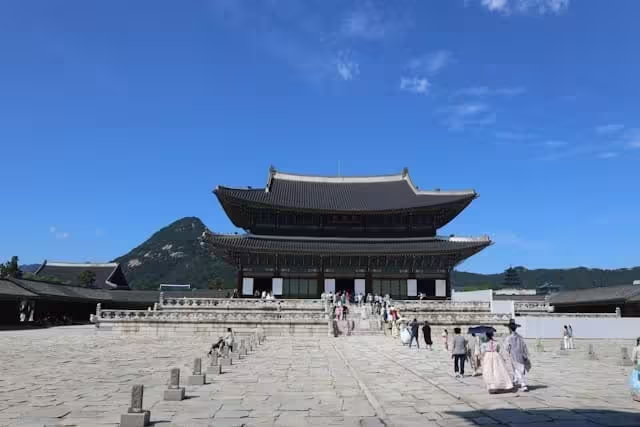
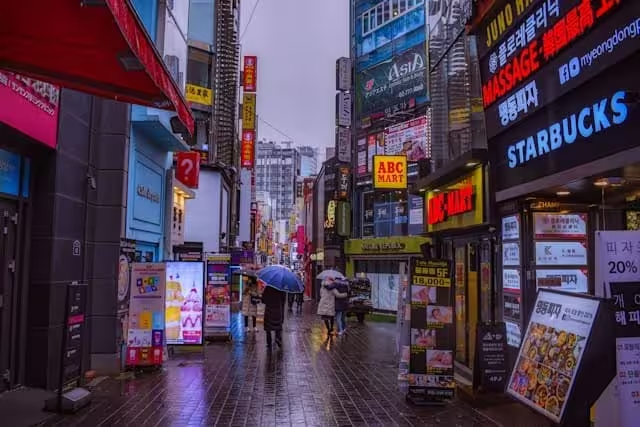
 Gyeongbokgung Palace (경복궁) and Bukchon Hanok Village (북촌한옥마을): Visit the palace (details above, closed Tuesdays ). Afterwards, walk (15-20 mins) or take a short taxi to nearby Bukchon Hanok Village, known for its traditional Korean houses (hanoks) lining charming alleys. Remember this is a residential area; keep noise levels down. Allow ~3-4 hours for exploring both, plus travel/buffer time.
Gyeongbokgung Palace (경복궁) and Bukchon Hanok Village (북촌한옥마을): Visit the palace (details above, closed Tuesdays ). Afterwards, walk (15-20 mins) or take a short taxi to nearby Bukchon Hanok Village, known for its traditional Korean houses (hanoks) lining charming alleys. Remember this is a residential area; keep noise levels down. Allow ~3-4 hours for exploring both, plus travel/buffer time. - Myeongdong (명동) Shopping & Street Food: Take AREX to Seoul Station, then subway (Line 4 to Myeongdong Stn). This bustling district is famous for cosmetics shopping (Olive Young ), fashion, and vibrant street food. Budget ~₩10,000-₩20,000 for a good food sampling. Great for experiencing modern Seoul’s energy.
- N Seoul Tower (Quick Visit): Take AREX to Seoul Station, then bus (e.g., Namsan Sunhwan Shuttle Bus No. 01A/B/C) or taxi to the Namsan Cable Car station. Take the cable car up Namsan Mountain (Round trip ~₩15,000 ) for panoramic city views from the tower observatory (Entrance ~₩21,000 ). Allow ~3 hours total from Seoul Station, including travel and viewing time. Views are best on clear days or evenings. Observatory Hours: ~10:30 AM – 10:30/11:00 PM. Cable Car Hours: ~10:00 AM – 11:00 PM.
- Insadong (인사동) Cultural Immersion: Take AREX to Seoul Station, then subway (Line 3 to Anguk Stn or Line 1 to Jonggak Stn). Explore traditional crafts, tea houses, art galleries, and find unique souvenirs. Enjoy a traditional meal or tea ceremony (tea ~₩5,000-₩10,000). Can be combined with Gyeongbokgung/Bukchon if planned well.
- Gwangjang Market (광장시장): Take AREX to Seoul Station, then subway (Line 1 to Jongno 5-ga Stn). A bustling traditional market famous for authentic street food like bindaetteok (mung bean pancakes) and mayak kimbap (mini seaweed rice rolls). Less touristy than some other markets.
9-12+ Hour Layover: Immerse Yourself
With a longer layover (especially 10+ hours ), you have more flexibility to explore Seoul’s diverse offerings or even venture slightly further.
- Combine Attractions: Comfortably visit Gyeongbokgung, Bukchon Hanok Village, and Insadong. Or explore Myeongdong and N Seoul Tower without rushing.
- Changdeokgung Palace (창덕궁) and Secret Garden (Huwon): Explore this beautiful UNESCO World Heritage site. Closed Mondays. Palace entrance: ₩3,000. The stunning Secret Garden (Huwon) requires a separate ticket (₩5,000) AND can only be visited via a guided tour (approx. 90 mins). Tours have limited spots (100 per tour: 50 online booking, 50 on-site same-day purchase) and often sell out. Book the Secret Garden tour online in advance via the official palace website if possible. Getting there: Anguk Station (Line 3).
- Explore Gangnam (강남): Experience the modern, trendy, and upscale side of Seoul, famous for shopping, entertainment, and K-pop influence. Take AREX to Seoul Station, then subway (e.g., Line 2 to Gangnam Stn).
- Visit the Demilitarized Zone (DMZ): For a unique and sobering experience, consider a half-day tour to the border between North and South Korea. Requires booking a guided tour in advance. Tours typically last 6-9 hours including travel from Seoul. Costs range from ~$50-80+ USD (₩65,000-₩100,000+) depending on inclusions. Ensure your layover is long enough (12+ hours recommended) and check tour operator pickup/dropoff points and times carefully. Passport required. Dress code may apply for some tour components (e.g., JSA tours).
- Indulge in a Jimjilbang (찜질방): Experience a traditional Korean spa/bathhouse for ultimate relaxation. Offers various saunas, hot tubs, relaxation areas, and sometimes massage services. Entrance fees typically ₩15,000-₩30,000+, plus extra for services. A great way to refresh.
- Discover Modern Seoul at Dongdaemun Design Plaza (동대문디자인플라자, DDP): Visit this iconic futuristic building designed by Zaha Hadid for its unique architecture, design shops, and cultural events/exhibitions. Getting there: Dongdaemun History & Culture Park Station (Lines 2, 4, 5).
- Experience Seoul’s Nightlife: With a very long or overnight layover, explore nightlife areas like Hongdae (popular with younger crowds, many places open late ) or Myeongdong. Be aware the subway closes around midnight. Taxis are available but more expensive. Plan return transport carefully.
- Guided Layover Tour: Consider booking a private guided layover tour. Costs vary widely ($170-$400+ USD) but offer personalized itineraries and efficient transport directly from the airport.
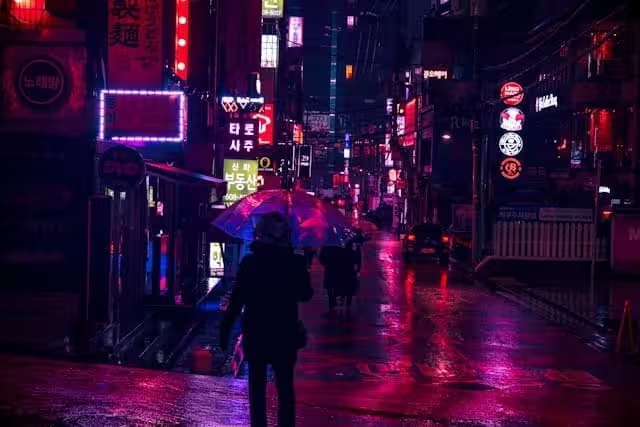
Getting Around: Airport Transfers & Smart Travel
Efficient transportation is crucial for making the most of your layover. Here are your main options for getting from Incheon Airport to Seoul:
AREX Express Train
The AREX Express train is the fastest and most convenient way to reach downtown Seoul (specifically Seoul Station) without any stops.
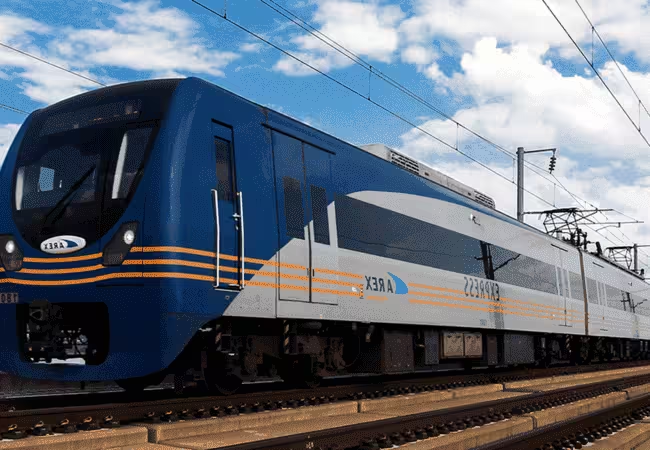
- Speed: The journey takes approximately 43 minutes.
- Frequency: Trains depart every 25-40 minutes.
- Cost: Around 9,500 KRW (approximately $7-8 USD).
- Convenience: Comfortable seating and luggage storage are available.
- Tip: Buy tickets at the blue AREX kiosks. Store carry-on in overhead racks.
Note that the AREX Commuter train is also available, is more frequent, and costs about half the price of the Express train to Seoul Station
AREX (Airport Railroad Express) Train Comparison

Tip: Buy Express tickets at the blue AREX kiosks or reserve online. Store carry-on in overhead racks. For the All-Stop train, use a T-Money card or buy single-journey tickets.
Airport Limousine Buses
- Coverage: Numerous routes serve different parts of Seoul, often stopping directly at major hotels.
- Comfort: Comfortable reclining seats, ample luggage space.
- Cost: Varies by route, generally ₩10,000 – ₩18,000. Some offer discounts with T-Money.
- Travel Time: Highly dependent on traffic, typically 60-90+ minutes to central areas.
- Tip: Find routes/schedules at airport counters or website. Can pay with cash or T-Money. Pre-booking online might be possible for some routes.
Taxi Services
- Convenience: Direct door-to-door service.
- Cost: Most expensive option. Expect ₩65,000+ (~$50 USD) to central Seoul, plus potential tolls and late-night surcharges. Cost is heavily influenced by traffic.
- Travel Time: Similar to buses, 60-90+ minutes depending on traffic.
- App Options: Download Kakao Taxi (Kakao T) app. Note: May require a local Korean phone number or verification. Find official taxi stands outside arrival halls.
Seoul Subway
The Seoul subway system is extensive, efficient, and clean. Purchase a T-Money card for easy tap-and-go travel. Signs and announcements are available in English.
CRITICAL REMINDER: Download Naver Map or Kakao Map Before Arrival
Standard navigation apps like Google Maps are highly unreliable for walking and driving directions in Seoul due to local data restrictions. To navigate effectively and avoid significant delays, downloading Naver Map (available in English) or KakaoMap is essential. Do this before leaving home or upon arrival using airport Wi-Fi. This single step can save considerable time and frustration.
Smart Cards & Passes: Easy Travel
Simplify your transportation and potentially save money with these options:
- T-Money Card (Highly Recommended): A rechargeable smart card usable on subways, buses, some taxis, and even in convenience stores/vending machines across Korea.
- Cost: The card itself costs ₩2,500 – ₩5,000+ (empty), depending on design (basic vs. character/K-pop).
- Where to Buy: Convenience stores (CU, GS25, 7-Eleven etc.) at the airport and throughout the city, subway station vending machines.
- How to Reload: Use CASH ONLY (KRW) at convenience stores or subway station recharge machines. Min load ₩1,000, max balance ₩500,000. Balance shown on screen when tapping in/out.
- Benefits: Offers small fare discounts (₩100 per ride) vs. single tickets and allows for free transfers between subway/bus lines within 30 minutes (up to 4 times daily).
- Refund: Remaining balance (up to a certain limit, minus a small service fee) can be refunded at convenience stores or stations. The card cost itself is non-refundable. Card doesn’t expire, balance typically valid for 5 years.
- Discover Seoul Pass: Combines unlimited rides on Seoul public transport (subway, city buses, AREX All-Stop train) with free/discounted admission to many attractions. Available in 24, 48, 72-hour options. Best for longer layovers (12+ hours) with significant sightseeing plans. Purchase online or at designated spots.
- Climate Card (Seoul Only): A 30-day pass for unlimited Seoul subway/bus rides (₩62,000 or ₩65,000 including public bike sharing). Likely not cost-effective for short layovers but an option for longer stays focused solely on Seoul. Requires card purchase (₩3,000).
- M-Pass: Offers 20 rides per day for 1-7 days. More expensive than T-Money for typical layover use. Requires deposit.
Quick Buy: T-Money cards are easily available at convenience stores (like GS25, CU) and ticket machines within Incheon Airport.
Layover in Korea Requirements: What You Need to Know (Updated 2025)
Understanding the requirements for a layover in Korea is essential for a smooth transit experience.
- Visa Requirements & K-ETA (Korea Electronic Travel Authorization):
- Temporary K-ETA Exemption (Until Dec 31, 2025): Nationals of 22 key countries/regions (including USA, Canada, UK, Australia, New Zealand, Japan, Taiwan, Hong Kong, Singapore, Macao, Germany, France, Italy, Spain, Netherlands, Belgium, Sweden, Norway, Denmark, Finland, Austria, Poland) are temporarily exempt from needing a K-ETA for short-term tourism or business visits (typically up to 90 days, varies by nationality).
- Optional K-ETA Application: During the exemption period, eligible travelers can still choose to apply for K-ETA (Cost: ₩10,000, approx. $7-8 USD ). The main benefit is skipping the paper arrival card upon entry. K-ETA is valid for 3 years.
- Mandatory K-ETA Resumption (From Jan 1, 2026): K-ETA is expected to become mandatory again for visa-exempt nationals starting January 1, 2026.
- Who Needs K-ETA Now? Nationals of other visa-waiver/visa-free countries not on the temporary exemption list still require K-ETA.
- Who Needs a Visa? Travelers from non-visa-waiver countries, or those visiting for purposes other than short-term tourism/business (e.g., work, study, long stays), need a traditional visa obtained from a Korean embassy/consulate.
- K-ETA Exemptions: Regardless of nationality, K-ETA is not required for:
- Transit passengers staying within the airport’s international transit area.
- Travelers aged 17 and under, or 65 and over.
- Holders of diplomatic/official passports.
- APEC Business Travel Card (ABTC) holders.
- Official Website: Apply only through the official K-ETA website: www.k-eta.go.kr. Apply at least 72 hours before travel. Beware of unofficial sites charging excessive fees.
- Passport Validity: Must be valid at the time of entry. Having 6+ months validity is generally recommended.
- Onward Ticket: You will typically need proof of your onward flight ticket.
- Customs/Health Regulations: Standard customs regulations apply. Check for any specific import restrictions (e.g., certain medications like amphetamines require pre-approval ). No specific COVID-19 entry requirements currently, but always check official sources for the latest health advisories before travel. An electronic arrival card (e-Arrival Card) system may be implemented or required; check official immigration sources.
- Crucial Advice: Entry requirements can change. Always verify the most up-to-date visa and K-ETA rules for your specific nationality directly with the official K-ETA website (www.k-eta.go.kr) , the Korean Immigration Service, or your local Korean embassy/consulate shortly before your trip.
16 Essential Tips for a Smooth Seoul Layover
To ensure your Seoul layover is enjoyable and stress-free, keep these tips in mind:
- Verify Entry Requirements: Check visa/K-ETA rules for your nationality well in advance.
- Apply for K-ETA if Needed: Use the official site: www.k-eta.go.kr.
- Ensure Passport Validity: Check expiry date.
- Have Onward Ticket Proof: Keep it accessible.
- Factor in Travel Time & Buffer: Be realistic about travel times to and from the airport, considering potential traffic, especially during peak hours (typically 7-9 AM and 5-7 PM).
- Deplaning & Immigration: ~30-45 minutes.
- Baggage Claim (if needed): ~15-20 minutes (use luggage storage to potentially skip this ).
- Transit to/from City (AREX Express): ~45-60 minutes each way. Add more for bus/taxi or AREX All-Stop.
- Airport Return Buffer (Security, Immigration, Gate): Minimum 2 hours, ideally 3+ hours before international departure. Allow extra during peak times or if checking bags
- My Personal Rule of Thumb: Start heading back to ICN at least 4 hours before your connecting flight’s departure time for peace of mind.
- Wear Comfortable Shoes: You’ll likely be doing a lot of walking.
- Have Local Currency (KRW): Needed for T-Money top-up (cash only!) , street food, smaller vendors, some entrance fees. ATMs available at ICN. Credit cards widely accepted otherwise.
- Learn Basic Korean Phrases: Knowing a few basic phrases can be helpful and is always appreciated.
- Download Useful Apps: Naver Map/Kakao Map (Essential!) , translation app (Papago), ICN Airport app, Kakao Taxi (optional).
- Stay Connected to Your Gate Information: Keep an eye on airport screens for updates.
- Wi-Fi Options: Free at ICN. Rent Wi-Fi egg or buy SIM card at airport for city use. (~₩5,000-₩10,000/day for egg).
- Power Outlets: Type F plugs (two round pins). Bring adapter if needed. Charging stations at ICN.
- Tipping: Tipping is not customary in most places.
- Luggage Storage: Use airport facilities if needed.
- Overnight Layovers: Consider airport hotels, capsules, or nearby Unseo Station options.
- Taxi Tip (Return): Ask a hotel concierge to call a taxi back to ICN for clarity.
Seasonal Considerations: When You’re Visiting
Seoul transforms dramatically with the seasons, each offering distinct experiences for layover travelers:
- Spring (March-May): Cherry blossoms create magical scenery (peak usually early-mid April). Pleasant weather for walking tours , though expect some rain later in spring.
- Summer (June-August): Hot and humid, with monsoon rains possible. Indoor attractions (museums, malls, DDP ) offer air-conditioned refuge. Han River parks can be lively.
- Fall (September-November): My favorite season for layovers. Crisp air, brilliant foliage in parks and palace grounds , and comfortable temperatures make walking delightful. Seoul’s palaces are particularly photogenic against autumn colors.
- Winter (December-February): Cold, often below freezing, requires proper warm clothing (layers, coat, hat, gloves). Occasional snow makes the city picturesque. Indoor attractions, underground shopping centers, and cozy tea houses/cafes are appealing. N Seoul Tower offers spectacular winter city views on clear days.
I once had a 12-hour winter layover and found the cold actually enhanced my experience – the hot street food tasted better, the tea houses felt cozier, and the city’s winter illuminations created a magical atmosphere.

Cultural Etiquette: Navigating Seoul Like a Local
Understanding a few cultural norms enhances your brief visit and shows respect for your hosts:
- When receiving items (money, food, gifts), use both hands or support your right arm with your left hand.
- Remove shoes when entering traditional restaurants with floor seating.
- Avoid writing someone’s name in red ink – this traditionally implies death.
- When using public transportation, offer seats to elderly passengers.
Basic Phrases: Effort is appreciated!
- “Annyeonghaseyo” (안녕하세요) – Hello (formal)
- “Kamsahamnida” (감사합니다) – Thank you (formal)
- “Juseyo” (주세요) – Please give me… (add item name before)
- “Mianhamnida” (미안합니다) / “Joesonghamnida” (죄송합니다) – Sorry (formal)
- “Yeogi-yo” (여기요) – Excuse me / Over here (to get attention, e.g., in restaurants)
- “Eolmayeyo?” (얼마예요?) – How much is it?
- “Hwajangshil eodi-ye-yo?” (화장실 어디예요?) – Where is the restroom?
During one layover, my attempt at Korean phrases led to an impromptu language exchange with shopkeepers in Insadong who appreciated the effort, resulting in tea and conversation that became the highlight of my visit.
Hidden Gems: Beyond the Tourist Spots
While the major attractions deserve their reputation, these lesser-known spots provide unique experiences during layovers:
- Ikseondong (익선동): A revitalized hanok (한옥, traditional house) area near Insadong, filled with trendy boutique cafes, restaurants, and craft shops tucked into narrow alleys. Less crowded than Bukchon but equally charming. To get there: Take the subway to Jongno 3-ga Station (Lines 1, 3, or 5) and walk.
- Seoullo 7017 (서울로 7017): An elevated park converted from a former highway overpass near Seoul Station, offering unique city views, gardens, cafes, and art installations. Easily accessible from Seoul Station.
- Gwangjang Market (광장시장): One of Seoul’s oldest and largest traditional markets. Famous for its authentic, bustling street food section – particularly bindaetteok (mung bean pancakes) and mayak gimbap (‘narcotic’ seaweed rice rolls, named for their addictiveness). A fantastic foodie destination. To get there: Take the subway to Jongno 5-ga Station (Line 1).
- Cheonggyecheon Stream (청계천): A restored urban stream flowing through downtown Seoul, offering a peaceful 11km-long walking path below street level. Features bridges, waterfalls, and public art. Easily accessible from various downtown subway stations like Gwanghwamun (Line 5) or City Hall (Lines 1, 2).
I discovered Ikseondong by accident during a rainy layover when seeking shelter. The tiny traditional houses converted to cafes provided the perfect atmosphere to experience both historic architecture and contemporary Korean design sensibilities while waiting out the weather.
9 Must-Try Korean Food During Your Layover
No trip to Korea, however brief, is complete without indulging in its flavorful cuisine. Many delicious options are available both at the airport and in the city. Here are some must-try dishes:
- Bibimbap (비빔밥): A colorful mixed rice bowl topped with assorted seasoned vegetables (namul), meat (usually beef), a fried egg, and gochujang (chili paste). Mix everything together before eating!
- Bulgogi (불고기): Thinly sliced beef (or sometimes pork) marinated in a sweet soy-based sauce, typically grilled at the table (Korean BBQ) or stir-fried.
- Kimchi (김치): The ubiquitous fermented spicy cabbage (or other vegetables like radish). Served as a side dish (banchan) with almost every meal.
- Tteokbokki (떡볶이): Chewy rice cakes stir-fried in a bright red, spicy, and slightly sweet gochujang-based sauce. A quintessential street food, often found in Myeongdong.
- Samgyeopsal (삼겹살): Grilled pork belly, a very popular Korean BBQ item. Diners grill thick strips of pork belly at the table and eat it wrapped in lettuce leaves with garlic, ssamjang (dipping paste), and other condiments.
- Kimbap (김밥): Korean seaweed rice rolls filled with various ingredients like spinach, carrots, pickled radish, egg, and meat or tuna. A convenient and popular meal or snack. Mayak Kimbap at Gwangjang Market is a famous version.
- Dakgalbi (닭갈비): Spicy stir-fried chicken marinated in a gochujang-based sauce, cooked on a large flat grill at the table with cabbage, sweet potatoes, rice cakes, and perilla leaves.
- Hotteok (호떡): Sweet, chewy pancakes typically filled with a mixture of brown sugar, cinnamon, and nuts. A popular street food dessert, especially delicious hot off the griddle in winter.
- Samgyetang (삼계탕): Ginseng chicken soup. A whole young chicken stuffed with glutinous rice, ginseng, jujubes, and garlic, simmered in a flavorful broth. Considered a healthy, nourishing dish, often eaten during summer.
You can find many of these dishes at restaurants within Incheon Airport or in various eateries around Seoul, especially in areas like Myeongdong , Insadong , and Gwangjang Market. Don’t be afraid to try something new!
You Might Also Enjoy: Savor Sapporo’s Iconic Miso-Based Butter Corn Ramen
How to Handle the Practical Side of Your Layover
Okay, let’s cover the details that will make your Seoul layover smooth and easy.
Staying Connected: SIM Cards and Wi-Fi
Staying connected is essential for navigation (Naver/Kakao Map!) and communication.
- Free Airport Wi-Fi: Incheon Airport offers free and reliable Wi-Fi throughout its terminals.
- Portable Wi-Fi Egg (Pocket Wi-Fi): Rent a portable Wi-Fi device at airport arrival hall counters (look for telecom providers like KT, SKT, LG U+ or rental services). Provides internet access for multiple devices. Costs typically range from ₩3,000-₩8,000 per day, often requiring a deposit. Pre-booking online can sometimes offer discounts.
- Local SIM Card: Purchase a prepaid local SIM card at airport arrival hall counters or convenience stores. Offers data (and sometimes voice/text) directly on your phone. Various plans available depending on duration and data needs. Useful for longer layovers or if you need a local phone number (e.g., for Kakao Taxi ).
Currency Exchange and Payment Methods
The official currency is the South Korean Won (KRW / ₩).
- Currency Exchange: Exchange booths and banks are available within Incheon Airport (arrival and departure halls) and in tourist areas like Myeongdong. Airport rates might be slightly less favorable than city rates. Exchange a small amount upon arrival for immediate needs like T-Money top-up.
- ATMs: Widely available at the airport and throughout Seoul. Look for ATMs with global network logos (Plus, Cirrus, etc.) to withdraw KRW using your international debit/credit card. Be aware of potential bank fees.
- Credit and Debit Cards: Major credit cards (Visa, Mastercard) are widely accepted in most shops, restaurants, hotels, and for AREX Express tickets. Smaller vendors, traditional markets, street food stalls, and T-Money reloading typically require cash (KRW). It’s essential to carry some cash.
What to Pack for a Seoul Layover (in Carry-On)
Packing appropriately in your carry-on can enhance your layover experience:
- Comfortable Walking Shoes: Essential!
- Layers of Clothing: Adapt to changing temperatures between the airport, transit, and outdoors, especially during spring/fall. Pack according to the season.
- Universal Adapter & Portable Charger: Korea uses Type F plugs (two round pins). Keep devices charged.
- Essential Travel Documents: Passport, onward flight ticket, visa/K-ETA confirmation (if applicable).
- Small Amount of Local Currency (KRW): For T-Money top-up, snacks, small purchases.
- Reusable Water Bottle: Stay hydrated. Water fountains available at ICN.
- Basic Toiletries/Medications: To freshen up. Carry prescription meds in original packaging with a doctor’s note if needed.
- Downloaded Offline Maps/Apps: Naver Map/Kakao Map, translation app, airline app, ICN airport app
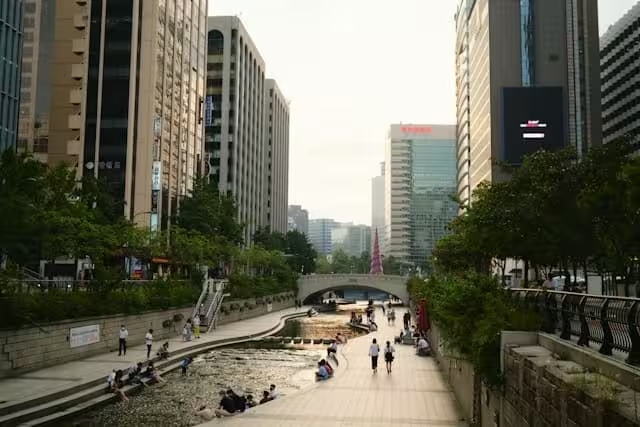
Seoul (ICN) Layover FAQs
What can I do in Seoul airport during a layover?
Incheon International Airport offers extensive shopping (duty-free, K-beauty), diverse dining (Korean, international), free cultural experience centers (crafts, Hanbok), airline lounges, spa services (Spa on Air landside, Prana Spa airside), free relaxation/nap zones, gardens, museums, observation decks, and even a movie theater and potentially an ice rink.
Is a 3-hour layover in Seoul enough to leave the airport?
Definitely not. Factoring in immigration, round-trip travel, and the required buffer time for return security and boarding, you would have virtually no time to explore and risk missing your flight. Stay within the airport and enjoy its amenities.
What can I do with a 6-hour layover in Incheon?
This is very tight and generally not recommended for going into Seoul. Your best options are:
- Stay in the airport: Enjoy the extensive facilities.
- Take a short Free Transit Tour (1-4 hours): Check the ICN website for options like the K-Culture Zone (in-airport), Inspire Resort, or nearby Incheon spots like Wolmi Park. This is structured and manages time for you.
- Explore Unseo Station area (1 stop from ICN): A less risky way to see a bit of local life near the airport. Attempting a trip to central Seoul (like Gyeongbokgung) is highly rushed and stressful with this timeframe.
Do I need a visa or K-ETA for a layover in South Korea (2025)?
- If staying airside (not passing immigration): No visa or K-ETA needed.
- If leaving the airport: Nationals from 22 countries (incl. US, CA, UK, AU, NZ, EU, SG, JP, TW, HK) are temporarily exempt from K-ETA until Dec 31, 2025, for short tourism/business stays. You can enter with just a valid passport. K-ETA is optional during this time (helps skip arrival card). K-ETA is expected to be mandatory again from Jan 1, 2026. Travelers aged 17/under or 65/over are also exempt. Nationals of other visa-waiver countries need K-ETA. Others need a visa. Always check the official K-ETA website (www.k-eta.go.kr) for your specific nationality’s requirements before travel.
What is the fastest way to get from Incheon Airport to Seoul?
The AREX Express Train is the fastest, taking ~43 minutes from T1 or ~51 minutes from T2 non-stop to Seoul Station. The AREX All-Stop train is cheaper and more frequent but takes ~15-20 minutes longer.
Are there luggage storage facilities at Incheon Airport?
Yes, several landside (before security) luggage storage services operate in T1 and T2, usually on the 1F (arrival) and 3F (departure) levels. They charge based on luggage size and duration, often per day. Operating hours are typically not 24/7.
What’s unique about Seoul that I can experience even in a short layover?
The dynamic blend of ancient history and hyper-modernity is palpable. You can see a centuries-old palace (like Gyeongbokgung ) near futuristic architecture (like DDP ). The incredible food culture, from street snacks to refined dining, is accessible even briefly. The efficiency of ICN airport and its transit options (including free tours ) allows for meaningful cultural glimpses even with limited time.
Conclusion
My numerous layovers in Seoul have taught me that this city offers perhaps the perfect balance for transit passengers – efficient enough to make short visits worthwhile yet rich enough in experiences to reward longer stays. The contrast of traditional palaces against modern architecture, the welcoming nature of locals, and the incredible food scene make even brief visits memorable.
Remember to verify your visa and K-ETA requirements , plan your transportation realistically (AREX Express vs. All-Stop ), download Naver Map or Kakao Map , and allow ample buffer time to return to the airport. Consider the excellent free transit tours offered by ICN for a structured experience.
I’ve transformed countless “waiting hours” into some of my most cherished travel memories in Seoul. From sipping a warm and comforting bowl of samgyetang during a chilly layover to marveling at the intricate details of Gyeongbokgung Palace on a sunny afternoon, these layover experiences have become destinations in themselves.
So the next time your flight itinerary shows a Seoul connection, don’t see it as dead time – see it as an opportunity for an adventure within your journey. The city and its incredible airport await, even if just for a few hours. These short trips can even inspire bigger adventures across Asia, whether exploring more dynamic cities or natural wonders like Japan’s majestic Mount Fuji.
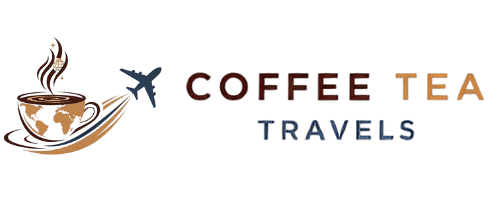
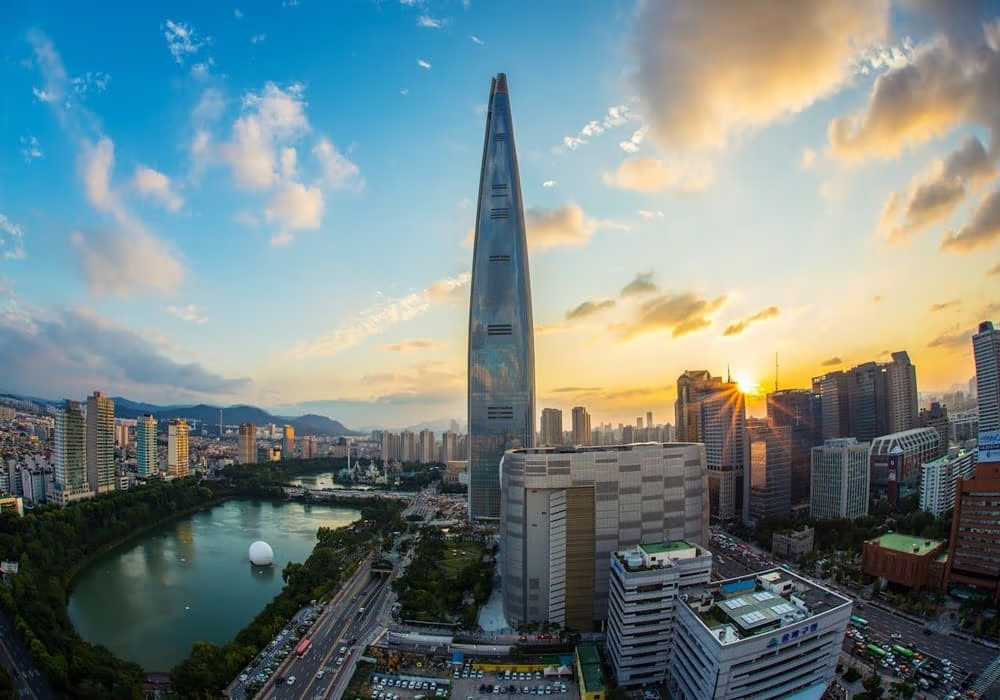
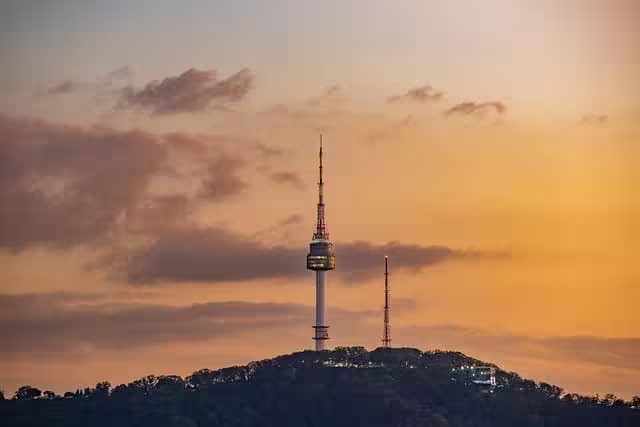 Gyeongbokgung Palace (경복궁) and Bukchon Hanok Village (북촌한옥마을):
Gyeongbokgung Palace (경복궁) and Bukchon Hanok Village (북촌한옥마을):
